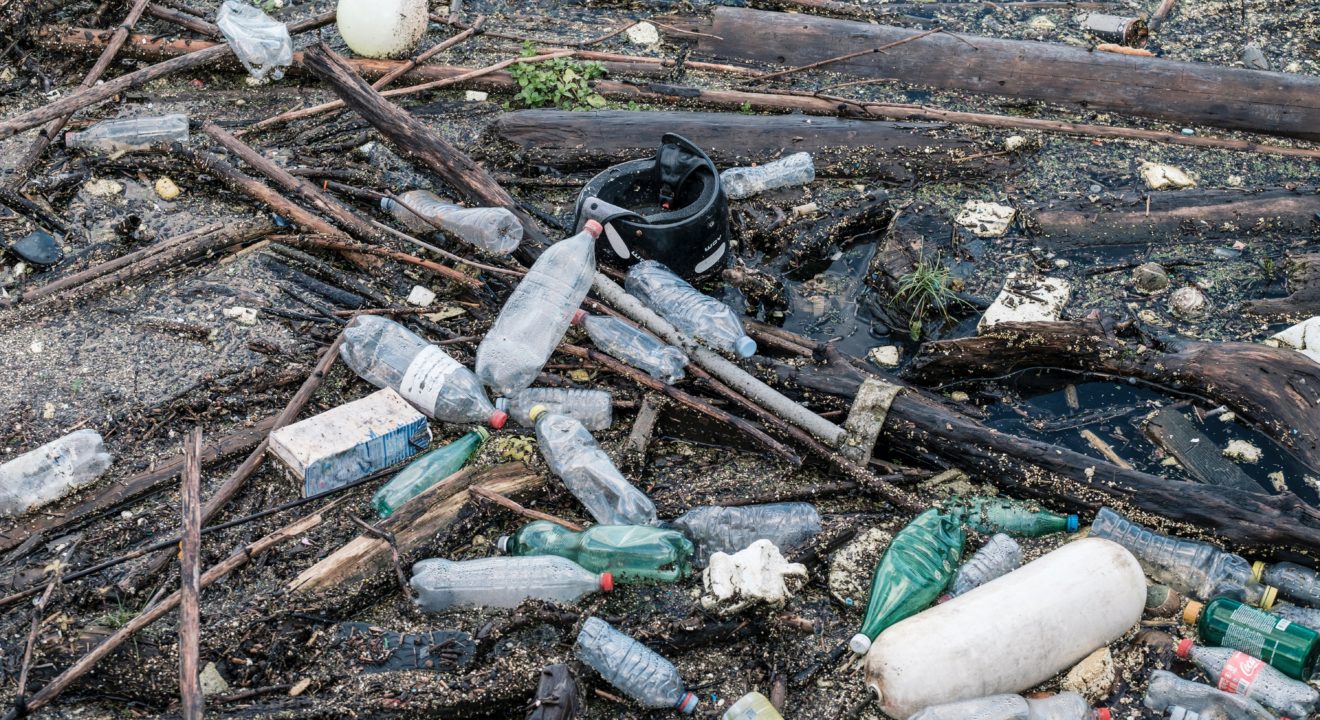Sustainability July 2, 2018


Plastic may look harmless. I mean, a small, plastic toy can’t really harm the environment, right?
As innocent as it may seem, plastic is incredibly dangerous. It kills sea life, and it can kill us. The real danger in plastic is that it takes five hundred years to degrade. This slow break down coupled with mass production results in urgency for plastic pollution solutions.
Luckily, not all hope is lost. Innovators of all ages have proposed various ways to end the problem. From recycling to biodegradable alternatives, here are four promising plastic pollution solutions that give (some) hope to our future.
Ashton Cofer, a high schooler, discovered—along with his three teammates of the same age—a way to recycle styrofoam when he was in eighth grade. He, Julia Bray, Luke Clay and Natalie Clay won three separate grants and awards for their accomplishment.
Cofer explains in his TED talk he and his team turned the carbon in styrofoam into the activated carbon used in water filters. These water filters can then provide clean water to areas that need it. Cofer states that this solves “two global problems with one solution.”
However, Cofer implies at the beginning of his TED talk that with this invention, styrofoam bans will not be necessary.
Companies and countries should continue to enact styrofoam bans, because we will likely not apply this solution to all styrofoam. Paper recovery was 67.2% and aluminum recovery was 49.4% in the United States in 2016; even if this solution is adaptable for mass-production or application, it is not reasonable to assume that we can recycle 100 percent of the material.
This idea can be incredibly helpful, however, for the styrofoam already in circulation. This way, we can reduce styrofoam pollution without adding to it and prove water filtration simultaneously.
You might recognize this product from your Facebook feed or music festivals. Ooho is an edible water bottle. Yes. Edible.
In 2016, 480 billion plastic drinking bottles were sold across the world. Humans recycled less than half of this amount and only 7% of those recycled “were turned into new bottles.” Using a new way to store water could help significantly reduce our plastic consumption.
Plus, after the expiration date, plastic leaks chemicals, poisoning the water and anyone who drinks it.
Enter Ooho. The packaging is made from seaweed and other plants, making it both biodegradable and edible. It doesn’t poison you, doesn’t contribute to plastic pollution and also looks weirdly satisfying. And kind of cute, too? Like a little jellyfish or something.
Unfortunately, there are a few downsides to the invention. Some critics point out that Ooho isn’t a very practical alternative to plastic. Because Ooho is so biodegradable, it won’t last long in stores, and transportation will be hard. Also, people can’t exactly carry around an Ooho in their bags or purses to sip on throughout the day.
But Ooho could replace water bottles at large festivals, sporting events and marathons, and that may make a significant dent in our plastic bottle consumption. These biodegradable bottles are here to stay!
All that glitters is not gold. In fact, most glitters are plastic. And if you’ve ever used glitter, you know that it sticks around; you could take four showers and still find shiny flecks hidden in your hair. As annoying as that may be for you, imagine how annoying it is for animals. They’re the ones that die from it.
Glitter is a type of microplastic, or a “small plastic piece… less than five millimeters long which can be harmful to our ocean and aquatic life.” Microplastics also include microbeads found in beauty and hygiene products, partially broken down plastic waste and plastic pellets called nurdles. Sea life often mistake these microplastics for food. This mistake can seriously injure and kill these organisms.
These microplastics can also harm us. While their effect on humans is not certain, Rachel Hurley of University of Manchester states that they “definitely do enter our bodies.”
But if you like glitter, all is not lost! Stores like Eco Glitter Fun, EcoStardust and GlitterEvolution offer biodegradable glitter as an alternative. Made from eucalyptus instead of plastic, this glitter is softer and breaks down within months!
However, there is concern over another material involved in the product. The eucalyptus is sealed with a thin layer of aluminum, which—like plastic—is a substance that takes a while to degrade. While this biodegradable glitter replaced plastic with eucalyptus, it failed to replace aluminum with a better material. This new product is still a better alternative to its plastic counterpart, but it can still improve.
Sometimes success doesn’t point upwards. Sometimes it’s beneath our feet.
At least, that’s how it is for Toby McCartney, an engineer that has found a way to use plastic waste to improve our roads. He along with other team members have found a mixture that is allegedly “60% stronger than traditional roads… and… last[s] up to three times longer.”
These roads recycle “approximately 20,000 single-use plastic bottles” for each ton of asphalt, making a significant impact in our plastic consumption. Using the asphalt tonnage calculator, if we make a two-lane one-mile road of typical thickness, we use around 2,000 to 5,800 tons of asphalt. Therefore, we recycle 40 to 116 million plastic bottles.
While some may worry about plastic escaping from the roads, McCartney firmly states that rain will not wash the plastic into oceans.
There is still concern over plastic pellets, however. McCartney uses these microplastics to make the roads. But when companies transport this form of plastic, these pellets find their way into the ocean anyway.
Despite this concern, recycling plastic in this way is exciting! Along with Cofer’s styrofoam project, it could greatly reduce plastic waste. And with products like Ooho and biodegradable glitter experimenting with different plastic alternatives, the world is one step closer to a plastic-free future.